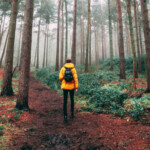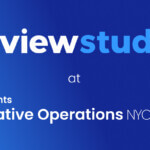Creativity often feels like some mysterious force that rarely cooperates, especially when you need it most. Controlling and tapping into this scarce resource is an integral part of creating and building the creative process.
Throughout history, many artists have set themselves bold creative challenges to try to push themselves to reach new creative heights. Oftentimes, these experiments are outlandish or provocative by design. However, there are many which could inspire you the next time you’re struggling with your own creativity.
Here are some of the ways that innovative artists have challenged their creativity and the lessons they teach about making room for experimentation in the creative process.
Artificial Creative Constraints
One of the simplest (and at the same time one of the most radical) ways to introduce experimentation into your creative process is the deliberate use of a creative constraint. In basic terms, this is a self-imposed rule or limiting circumstance that you use to force yourself to work in a way you wouldn’t normally do. As Damien Correll, creative director at Figma, put it: “Constraints usually make me think in a different way than I would maybe naturally think.”
Oulipo is a renowned group of writers and scientists who dedicate their time to creating and using a range of constraints. One of the most well-known members was Georges Perec who wrote a mystery novel, A Void, without once using the letter E – a practice that is known as a lipogram. Other exercises include univocalisms, where only one vowel can be used throughout the text, or 99 accounts of the same (mundane) scene, each in a unique style and tone.
Ambigram or vertical palindrome by Georges Perec
Raymond Queneau, one of Oulipo’s founders, characterized Oulipians as “rats who build the maze from which they plan to escape.” This metaphor gets to the heart of why experimenting with constraints can be so useful. It requires you to think with more agility and to work your way around solid obstacles, making it more likely that you’ll discover connections and solutions that you wouldn’t have otherwise seen. By taking away the more obvious or well-traveled paths, it forces you to find new ones.
Creativity and problem-solving are inexorably linked. Presenting yourself with a recognizable and concrete problem puts you in the necessary mindset for discovering an elegant solution.
The constraint can also take some of the anxiety and uncertainty out of creative thinking.
Rather than a dauntingly infinite series of possibilities, it presents you with a set of boundaries to work within, providing you with actionable steps and helping to stave off analysis paralysis. Rather than placing a stress-inducing demand on yourself to think outside of the box, you’re creating a brand new box in which to work.
And as any kid will tell you, a box is a source of endless inspiration.
Other practical constraints you could experiment with include avoiding certain words (such as I, so, however, and etc.), restrictive word counts, self-imposed deadlines, and many others.
Try embracing constraints that are out of your control (like deadlines, resources, or external requirements) and choose to make them an active part of your process, rather than allowing them to cause you anxiety.
Providing it presents you with a challenge that you are interested in overcoming, you could realistically use anything as a constraint.
The Medium Can Create the Message
The medium you’re working with is an important consideration because of the way it impacts how a task is accomplished. There are different processes and expectations for writing a novel, creating a painting, or composing an email. You can get interesting results by merging media or transplanting elements from one to another.
When adapting Earnest Hemingway’s ‘The Sun Also Rises’ for the Washington Ballet, Septime Webre said: “One of the challenges is to distill the story so the audience isn’t dealing with secondary plot issues. In our art form, what we do best is make the feelings foremost.”
Because visual information is processed differently from spoken or written words, from landscape to paintbrush, from idea to keyboard or pen, it forces us to engage with the source material in a new way and prioritize different aspects. Changing forms can limit a piece of creative work in some ways but bring others into sharper focus. It’s a powerful way to gain new insights into parts of what you’re working on and give a welcome freshness to a project that has become stale. This kind of adaptation experiment isn’t very practical if you’re trying to hit a deadline, though. You likely don’t have the time or patience to try to turn your press release into an epic poem. There are subtler ways to play with the format.
Thinking in terms of an alternative medium can challenge your preconceptions about requirements. When designing a building, the celebrated architect Sunand Prasad asks questions like “What if this library was a garden? If this facade could speak, would it be cooing, swearing, silent, erudite?” to shift his perception. This might seem strange and unhelpful, but it instantly forces you to question your assumptions about what needs to be present in the design and how you approach it. Creativity is often said to be the process of taking what you already know and combining it in fresh ways. Challenging your medium is a powerful way to apply knowledge you already have but hadn’t considered relevant before.
There are also simple and practical steps you can take to experiment directly with the medium. Use voice notes, a storyboard or sketches to record and develop your ideas rather than writing them down (or vice versa if you don’t usually work with words). Make full use of the psychology of space by using 3D items to represent your thoughts or by distributing your ideas around you on post-it notes.
Just because the end product needs to be a certain shape, it doesn’t necessarily mean it has to start off within those parameters.
Tapping Into Yourself as the Creator
For the most part, the methods we’ve already covered are ones that affect the work itself. There are also many creatives who make themselves – and their bodies – the subject of their experiments. Sculptor Marc Quinn did this quite literally when he created self-portraits using ten pints of his own blood to create something that was both a depiction of himself and made of himself.
Other creative experiments have been designed to tap into the artist’s subconscious thoughts. In fact, this was one of the foundations of Surrealism. Salvador Dali famously let himself drift to the point of deep sleep before waking himself up and trying to represent the thoughts he had while in a dreaming state. Napping in the office probably isn’t practical for many reasons but keeping a notepad beside your bed to record late night or early morning thoughts might yield some interesting results.
Then there are those creatives who utilize discomfort and even danger to push themselves. The technique of method acting (where actors live out the experiences of their character to improve their portrayal) has led many artists to go to extremes: Halle Berry deliberately didn’t wash while filming ‘Jungle Fever’, while Daniel Day-Lewis spent time in solitary confinement without food or water for ‘In the Name of the Father’. Eccentric inventor Yoshiro Nakamatsu landed on the strategy of starving his brain of oxygen by spending extended periods underwater to encourage new inventions to come to him. While I absolutely do not recommend trying anything this drastic, you might channel your inner Berry or Day-Lewis by spending an hour or two living the way you think someone else does to try to understand them better. To safely emulate Nakamatsu, why not see how creative you are after a short burst of intense exercise?
Balancing Experimentation and Routine in your Creative Process
Many creatives rely on rituals that get them in the ideal headspace to create. There are plenty of unique (and sometimes bizarre) creative routines and rituals that some of the most masterful creatives swore by. Establishing a routine is often a huge part of finding a sustainable and creative way of working. However, you should never let yourself become so entrenched in your own personal rituals that you aren’t trying anything new.
Newness, whether it be new ideas, new connections, or new methods, is what creativity is all about. By forcing yourself out of your comfort zone, you may well come up with fresh ideas or approaches to work with. It will also prevent you from becoming bored or overwhelmed. Besides, many things that went on to form an integral part of someone’s routine probably started out as a step into the unknown. Leave a little room for experiments in your creative process and see what you discover.






